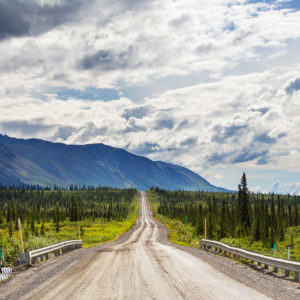Editor’s Note: For an alternative viewpoint, please see: Counterpoint: A Special Place Faces a Deadly Threat
The U.S. Energy Information Administration just released its annual International Energy Outlook, and it confirms we’ll need more natural gas and oil in the coming decades. A lot more. EIA projects that natural gas, oil and coal will supply about 76 percent of the world’s energy in 2050, and that world energy consumption will increase 28 percent by 2040.
The United States is well-positioned to meet our energy needs and remain a world energy leader, but only if we take advantage of our resources.
That’s why Interior Secretary Ryan Zinke’s June secretarial order calling for increased energy exploration in Alaska is such welcome news. “The only path for energy dominance is a path through the great state of Alaska,” Zinke said, and the data back him up.
Just a small section of the Arctic National Wildlife Refuge is estimated to hold between 4.3 billion and 11.8 billion barrels of oil. At the high end — that’s more than 10 times the amount of oil produced in 2016 in Texas — the nation’s leading producing state.
In the National Petroleum Reserve-Alaska (NPR-A), the U.S. Geological Survey estimates 895 million barrels of oil and 53 trillion cubic feet of natural gas are waiting to be unlocked. That’s more than 10 times the natural gas Pennsylvania — the nation’s No. 2 natural gas producer — produced in 2016.
Adding the equivalent of a second Texas and Pennsylvania to our energy supply would greatly enhance U.S. energy security.
And we can do it safely.
These are areas specifically designated for energy development, under parameters that ensure minimal effect to the surrounding environment and wildlife. ANWR is about the size of South Carolina, and the area Congress targeted for exploration could be developed from tracts collectively equaling about 2,000 acres — roughly the size of Dulles Airport in Virginia.
Oil resources are already being developed safely right next door to ANWR at Point Thomson and at the Alpine Field near NPR-A. The difference is that both of these areas are on state lands, not subject to the shifting decrees of the federal government — which has erected a series of bureaucratic obstacles to energy development in Alaska, including a 2015 order blocking ANWR development.
Strong majorities of Alaskans support developing resources in ANWR and NPR-A, which could generate jobs and badly needed revenue for the state.
But energy development in the Arctic is more than an Alaska issue. It’s a national issue, with major implications for U.S. energy security and national security.
The United States leads the world in production and refining of natural gas and oil, and our energy renaissance has provided a welcome shield protecting Americans from price fluctuations at the pump. Events overseas are as turbulent as ever, but fuel prices haven’t been, thanks to the stability U.S. production has added to world markets. More than stability, the U.S. energy resurgence has put downward pressure on prices, saving drivers more than $550 at the pump in 2015 and saving households an average $1,337 on utility bills and other energy-related expenses.
That’s energy security, and maintaining it isn’t a given. We need to be exploring today for the resources that will provide energy security tomorrow.
Arctic energy development has national security implications, as well.
With Russia and China already active in the “increasingly strategic region,” U.S. withdrawal would “signal retreat, needlessly reducing U.S. flexibility for promoting our national interests and our ability to ensure international cooperation, including ensuring best practices in Arctic drilling.” That’s according to a letter sent to the Obama administration from former Clinton administration Defense Secretary William Cohen and 14 other military experts.
Decades of experience operating in Arctic environments demonstrate the oil and natural gas industry has the technology and expertise to safely develop Arctic resources, onshore and offshore. And we can protect our energy security while reducing emissions. We lead the world in reducing carbon emissions, which have dropped to nearly 30-year lows in the power sector largely due to increased use of clean natural gas.
With so much untapped potential in Alaska, blocking energy development there makes about as much sense as halting production in Texas or Pennsylvania. Secretary Zinke’s move to open ANWR is an essential step toward building U.S. energy security.

